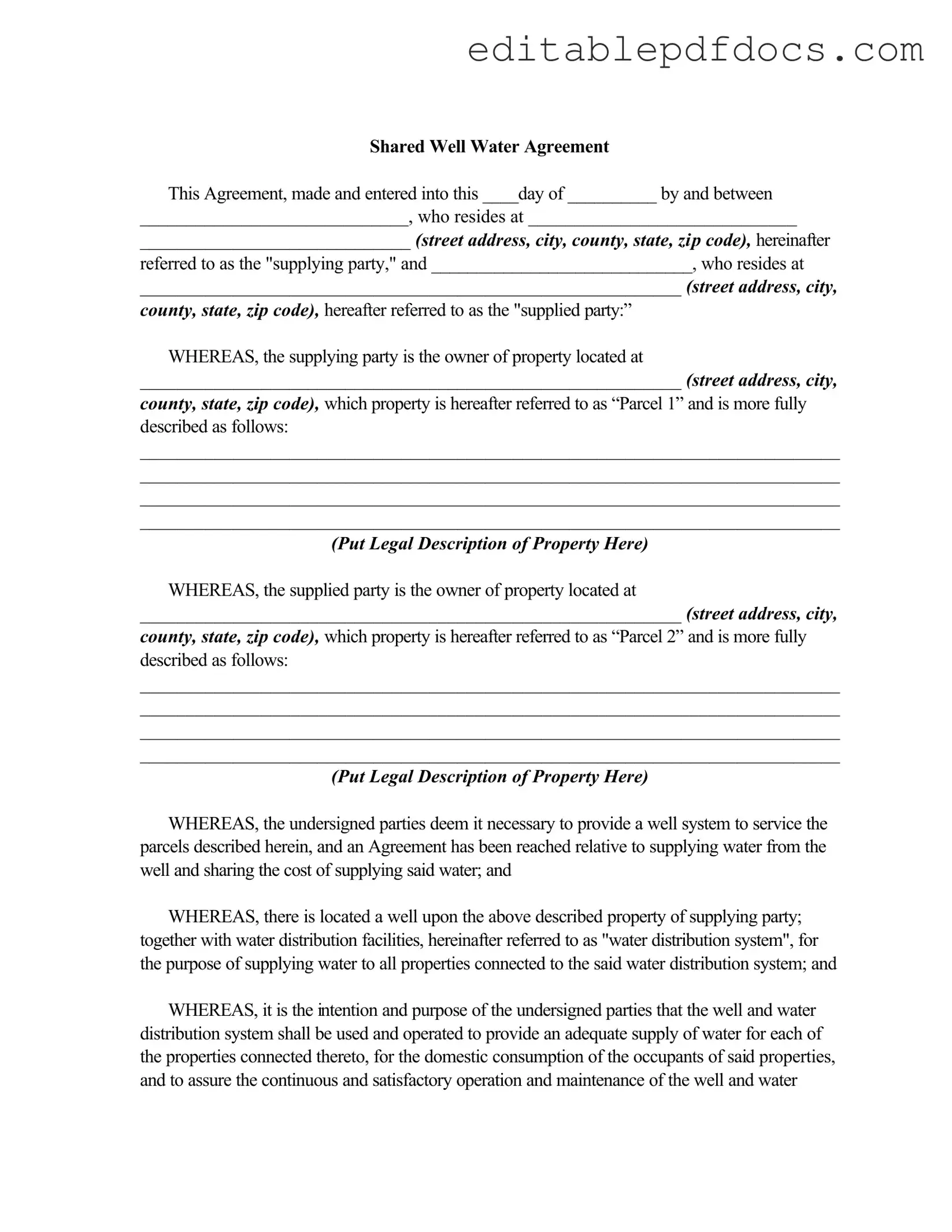Filling out the Shared Well Agreement form can be straightforward, but several common mistakes can lead to complications. One frequent error is failing to provide complete and accurate addresses for both the supplying and supplied parties. Incomplete information can create confusion about the parties involved and their respective properties, which may lead to disputes later.
Another mistake is neglecting to include the legal descriptions of the properties. This information is crucial as it defines the exact parcels involved in the agreement. Omitting this detail can result in ambiguity regarding the properties that are part of the shared well arrangement.
People often overlook the importance of specifying the annual fee for the use of the well and water distribution system. Leaving this section blank can lead to misunderstandings about financial obligations. Additionally, failing to indicate the payment due date can create further complications in the relationship between the parties.
Another common error is not addressing the shared expenses for maintenance and operation. The agreement should clearly outline how costs will be divided. If this is not explicitly stated, disputes may arise regarding who is responsible for various expenses, which can lead to financial strain between the parties.
Many individuals also forget to describe the easements necessary for the maintenance of the well and water distribution system. This omission can limit access and create problems when repairs are needed. It is essential to provide a clear description of any easements to avoid future conflicts.
People may also fail to define what constitutes an emergency situation. Without a clear definition, parties might disagree on when access is warranted, potentially delaying necessary repairs. Establishing a mutual understanding of emergencies can help ensure timely responses to issues that arise.
Finally, neglecting to sign and date the agreement correctly can invalidate the document. All parties must ensure that their signatures are present, and the date is filled in properly. This final step is critical to enforce the terms of the agreement and protect the rights of all involved.
